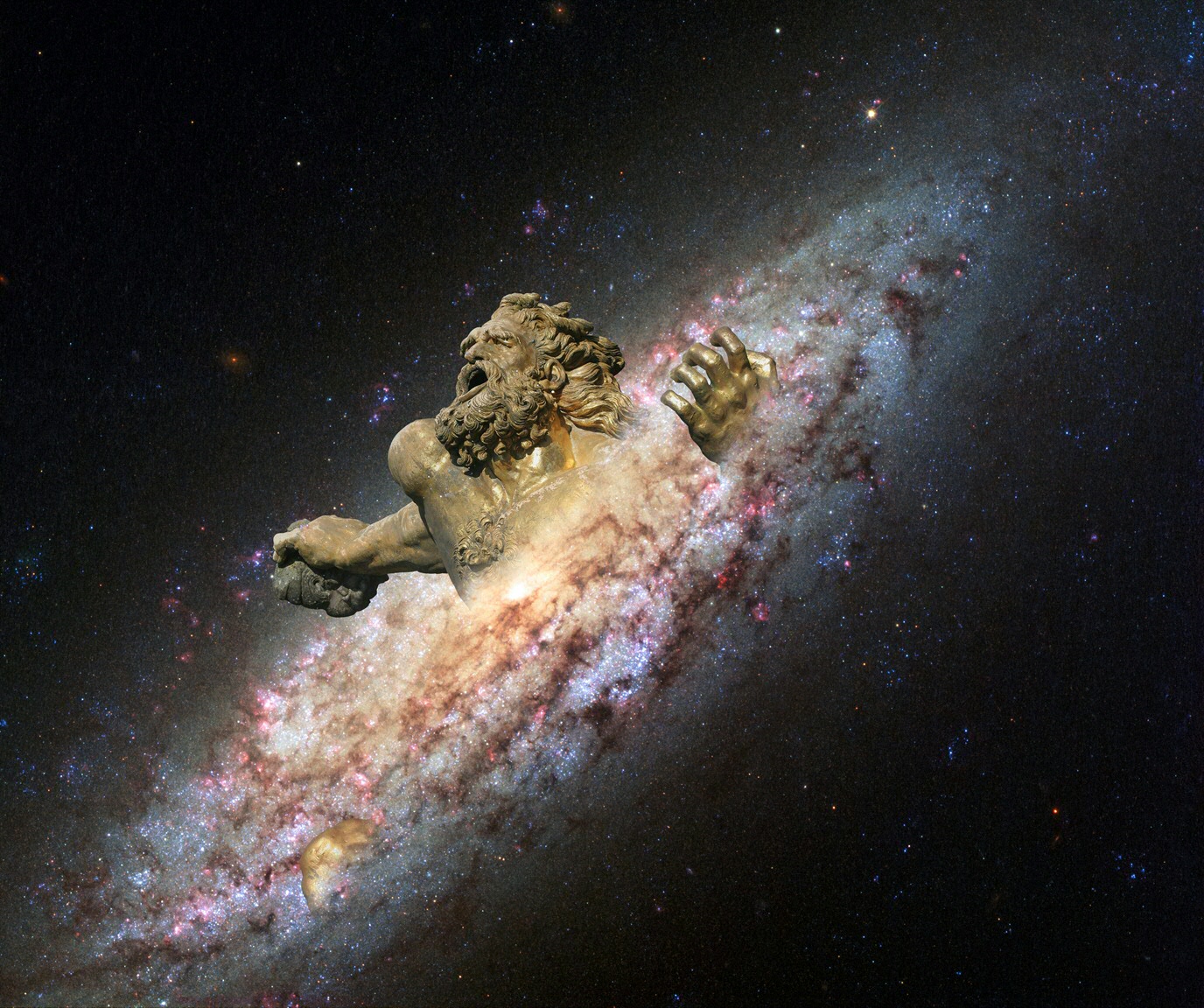Sterrenkundigen vinden de reus die de jonge Melkweg zijn vorm gaf

Ongeveer tien miljard jaar geleden vond een samensmelting plaats van de Melkweg en een ander sterrenstelsel. De meeste sterren in de halo van de Melkweg zijn afkomstig van dit tweede stelsel, dat de naam Gaia-Enceladus heeft gekregen, en dat ook de dikke schijf van de Melkweg vorm gaf. Een beschrijving van deze megafusie, die is ontdekt door een internationaal team onder leiding van hoogleraar sterrenkunde Amina Helmi van de Rijksuniversiteit Groningen (RUG), staat nu in het wetenschappelijk tijdschrift Nature.
Grote sterrenstelsels zoals onze Melkweg zijn ontstaan door de samensmelting van kleinere stelsels. Astronomen vragen zich af of dat gebeurde door een groot aantal kleine fusies, of een paar grote. Sterrenkundige Amina Helmi heeft het grootste deel van haar carrière gezocht naar ‘fossielen’ in de Melkweg die kunnen vertellen hoe deze is ontstaan. Ze gebruikt de chemische samenstelling van sterren, hun positie aan de hemel en de baan die ze volgen in de halo, de wolk sterren rond de centrale schijf van de Melkweg. Zo kan ze hun geschiedenis achterhalen en erachter komen wat voor soort gebeurtenissen de vroege Melkweg hebben gevormd.
Gaia's tweede datarelease
Professor dr. Helmi heeft sinds kort heel veel nieuwe gegevens in handen: in april 2018 is de tweede dataset van de Gaia ruimtetelescoop naar buiten gebracht, met informatie over 1,7 miljard sterren. Helmi is al zo’n twintig jaar betrokken bij de ontwikkeling van deze Gaia missie en ze maakte deel uit van het team dat de kwaliteit van de tweede dataset test. Ze heeft die gegevens nu gebruikt om te speuren naar sporen van samensmeltingen in de halo. “We verwachtten sterren afkomstig van fusies vooral in de halo. Maar wat we niet verwacht hadden, was dat verreweg de meeste sterren in de halo afkomstig waren van slechts één zeer grote fusie.”
Dikke schijf
Dat is precies wat Helmi ontdekte. De chemische vingerafdruk van veel sterren in de halo week duidelijk af van de vingerafdruk van sterren die in de Melkweg zijn ontstaan. Helmi: “En ze vormen een tamelijk homogene groep, wat wijst op een gemeenschappelijke afkomst.” Door de banen van de sterren en hun chemische vingerafdruk tegen elkaar uit te zetten werden deze immigranten als een afgebakende groep duidelijk zichtbaar. “In wat we nu de dikke schijf’ van de Melkweg noemen, zijn de jongste sterren afkomstig van Gaia-Enceladus jonger dan de oorspronkelijke Melkweg sterren. Dit betekent dat er ten tijde van de fusie al een voorloper van de dikke schijf aanwezig was en dat Gaia-Enceladus, door zijn grootte, die schijf heeft opgeschud en opgeblazen”, aldus de astronome.

In een vorige publicatie had Helmi al een grote ‘klont’ sterren beschreven met een gezamenlijke afkomst. Nu laat zij zien dat deze klont in de halo een restant is van de samensmelting van de Melkweg met een sterrenstelsel dat net iets groter is dan de Kleine Magelhaense Wolk, en die tien miljard jaar gelden plaatsvond. Dit stelsel is Gaia-Enceladus genoemd, naar de reus Enceladus die in de Griekste mythologie een kind was van Gaia (de aardgodin) en Uranus (de hemelgod).
Simulatie
De gegevens over de beweging, chemische samenstelling, leeftijd en ruimtelijke verdeling van de oorspronkelijke Melkweg sterren en de sterren van Gaia-Enceladus. riepen bij Helmi herinneringen op van een simulatie die een voormalig promovendus van haar ooit maakte. Zo’n 10 jaar geleden simuleerde deze PhD student de samensmelting van een groot schijfvormig sterrenstelsel met de jonge Melkweg. Dat leverde een verdeling van sterren uit beide stelsel op die sterk overeenkomen met de gegevens van de Gaia missie. Helmi: “Het was een geweldig ervaring om naar die nieuwe data te kijken en mij te realiseren dat ik dit al eerder had gezien!”
Meer informatie
- Het Nature artikel: Amina Helmi, Carine Babusiaux (IPAG), Helmer H. Koppelman, Davide Massari, Jovan Veljanoski, Anthony G.A. Brown (Universiteit Leiden): The merger that led to the formation of the Milky Way's inner stellar halo and thick disk; http://dx.doi.org/10.1038/s41586-018-0625-x
- Simulatie van de samensmelting - Een simulatie, ongeveer tien jaar geleden gemaakt, van de samensmelting van een met de Melkweg vergelijkbaar sterrenstelsel (de sterren zijn in blauw weergegeven) met een kleiner schijfvormig sterrenstelsel vergelijkbaar met de Kleine Magellaense Wolk (deze sterren zijn rood). Aan het begin van de simulatie zijn beide stelsels gescheiden, maar de zwaartekracht trekt ze bij elkaar, wat ertoe leidt dat het kleinere stelsel wordt opgenomen door het grotere. Om in dit stadium de sterren die zijn toegevoegd nog te onderscheiden is niet eenvoudig, maar het is mogelijk door hun beweging en chemische samenstelling te meten. Credits: H.H. Koppelman, A. Villalobos, A. Helmi (Rijksuniversiteit Groningen)
- Over Amina Helmi
